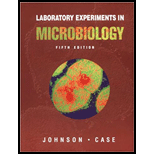
Concept explainers
Trypanosome and Plasmodium are both found in blood. How do they differ in their locations relative to red blood cells?
To write:
The difference in the locations of Trypanosoma and Plasmodium relative to red blood cells.
Introduction:
Trypanosoma is a monophyletic group of unicellular parasitic flagellate protozoa. It is a part of phylum Sarcomastigophora. Plasmodium is a group of unicellular eukaryotes that are obligate parasites of vertebrates and insects and it injects during a blood meal. It is a part of the phylum Apicomplexa.
Explanation of Solution
Trypanosoma and Plasmodium both are found in the blood. Trypanosoma lives in the blood plasma or lymph node fluid. Trypanosoma is an extracellular parasite that causes sleeping sickness and other chronic infections. It occurs in two main niches, early in infection, they populate the blood and later they breach the blood-brain barrier.
Plasmodium lives inside the red blood cells. Plasmodium involves development in the blood-feeding insect host which injects parasite into the vertebrate host during a blood meal. Parasites grow within the tissue body of the vertebrate, before entering the bloodstream to infect the red blood cells. It causes malarial infection.
Thus, Trypanosoma is found in the plasma or lymph node of the blood while Plasmodium is found inside the red blood cells of the blood.
Want to see more full solutions like this?
Chapter 35 Solutions
Symbiosis, Lab Experiments in Microbiology
- 12. Which of the following molecules can absorb light? a. Pigments b. Chlorophyll c. Rhodopsin d. Carotenoids e. All of the abovearrow_forwardWhich of the following proteins or protein complexes is directly required for the targeting of mitochondrial inner membrane multipass proteins, such as metabolite transporters, whose signal sequence is normally not cleaved after import? OA. TIM22 OB. TIM23 C. OXA OD. Mia40 OE SAMarrow_forwardQUESTION 9 An animal cell has been wounded and has a small rupture in its plasma membrane. Which of the following is more likely to happen next? OA. The cell rapidly cleaves by cytokinesis. OB. The rate of receptor-mediati endocytosis is increased. OC. The rate of exocytosis is increased. OD. The rate of pinocytosis is increased.arrow_forward
- For the a subunit of a trimeric G protein, A. a G-protein-coupled receptor GPCR) acts as a guanine nucleotide exchange factor (GEF), whereas a regulator of G protein signaling (RGS) can act as a GTPase-activating protein (GAP). B. a GPCR acts as a GAP, whereas an RGS can act as a GEF. C. both a GPCR and an RGS can act as a GEF. O D. both a GPCR and an RGS can act as a GAP OE. None of the above.arrow_forwardA cell expresses a transmembrane protein that is cleaved at the plasma membrane to release an extracellular fragment. The fragment binds to receptor proteins on nearby cells and activates signaling pathways resulting in altered gene expression patterns in the cells. What form of intercellular signaling does this represent? OA. Contact-dependent signaling B. Paracrine signaling OC. Synaptic signaling D. Endocrine signaling E. Autocrine signalingarrow_forwardWhich of the following drive nuclearly encoded proteins import into the mitochondrial matrix? OA. ATP hydrolysis OB. Membrane Potential OC. K+ Ions OD. A and B OE. None of the abovearrow_forward
- Which of the following statements is true regarding Cholesterol import into the cell? OA. It is transported within LDL B. Receptor mediated endocytosis is involved OC. Release of cholesterol occurs in the Lysosome D. All of the above are true statements OE. None of the above are true statementsarrow_forwardIn which of the following schematic drawings of signaling pathways does the activation of the receptor lead to gene expression? Activating and inhibitory steps are indicated with (+) and (-), respectively. OA OB ㅇㅂㅇㅂㅇㅁ (+) Gene Expression Activated Signaling proteins Transcription receptor activator Bl D Gene Expression Gene Expression ㅁㅁㅇ Gene Expression Gene Expressionarrow_forwardWhich of the following events normally activates a GTP-binding protein? OA. GTP hydrolysis by the protein OB. Activation of an upstream GTPase-activating protein OC. Activation of an upstream guanine nucleotide exchange factor OD. Phosphorylation of a bound GDP molecule by an upstream phosphorylase OE. Pi release after GTP hydrolysisarrow_forward
- Proteins that are synthesized on the Rough ER are imported into the ER lumen after their signal sequence is recognized. Which of the following is responsible for the signal recognition? OA. Signal Recognition Particle, OB. Signal Sequence C. Stop-transfer sequence OD. Both B and C OE. None of the abovearrow_forwardStroma Light 4 H 4 H I Thylakoid- membran 2 H₂O D1 D2 Min Light 2,6 ATP 2 NADP+ 2 NADPH/H+ Fp 2,6 ADP +2,6 P 8 H+ 12 H+ 4 H+ Lumen PS II Cyt bef PS I ATP-Synthase 12345 5a 5b 6arrow_forwardWhich of the following statements is TRUE regarding the signal recognition particle (SRP)? OA. SRP is made up of RNA and Proteins B. SRP binds to the signal sequence OC. SRP binds to the elongation factor binding site on the ribosome and pauses translation D. All of the above are true statements OE. None of the above are true statementsarrow_forward
 Concepts of BiologyBiologyISBN:9781938168116Author:Samantha Fowler, Rebecca Roush, James WisePublisher:OpenStax CollegeBasic Clinical Lab Competencies for Respiratory C...NursingISBN:9781285244662Author:WhitePublisher:Cengage
Concepts of BiologyBiologyISBN:9781938168116Author:Samantha Fowler, Rebecca Roush, James WisePublisher:OpenStax CollegeBasic Clinical Lab Competencies for Respiratory C...NursingISBN:9781285244662Author:WhitePublisher:Cengage Biology Today and Tomorrow without Physiology (Mi...BiologyISBN:9781305117396Author:Cecie Starr, Christine Evers, Lisa StarrPublisher:Cengage Learning
Biology Today and Tomorrow without Physiology (Mi...BiologyISBN:9781305117396Author:Cecie Starr, Christine Evers, Lisa StarrPublisher:Cengage Learning Biology 2eBiologyISBN:9781947172517Author:Matthew Douglas, Jung Choi, Mary Ann ClarkPublisher:OpenStax
Biology 2eBiologyISBN:9781947172517Author:Matthew Douglas, Jung Choi, Mary Ann ClarkPublisher:OpenStax





